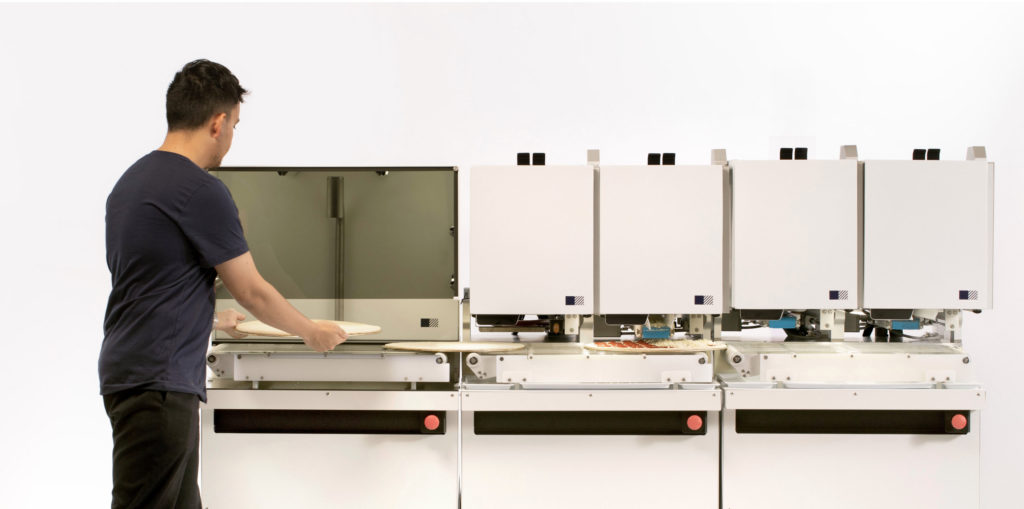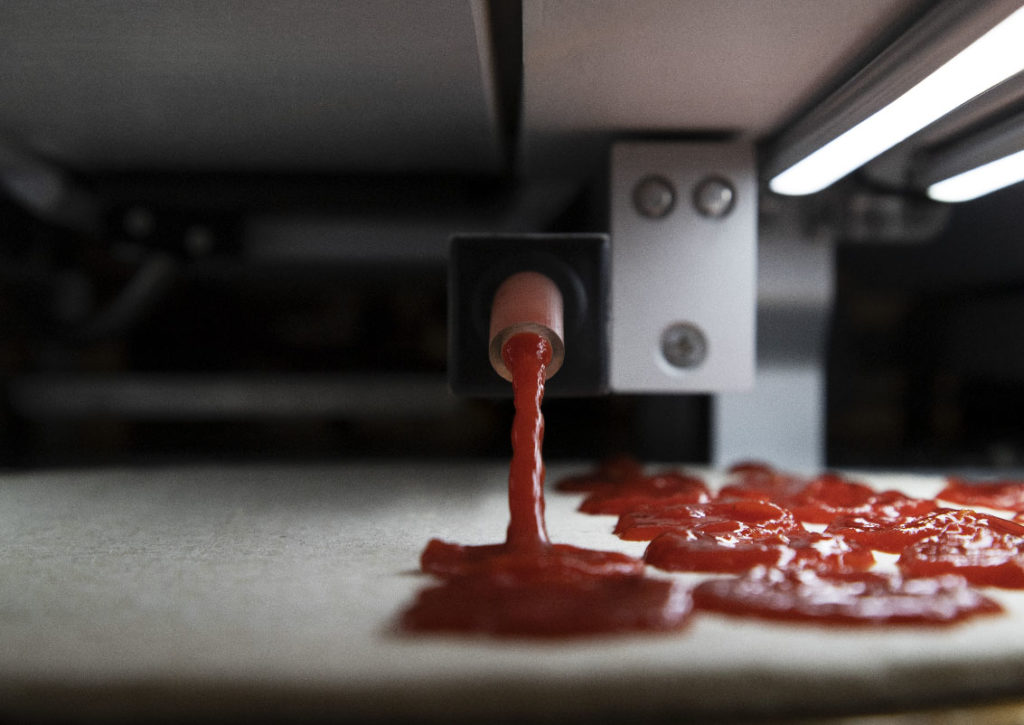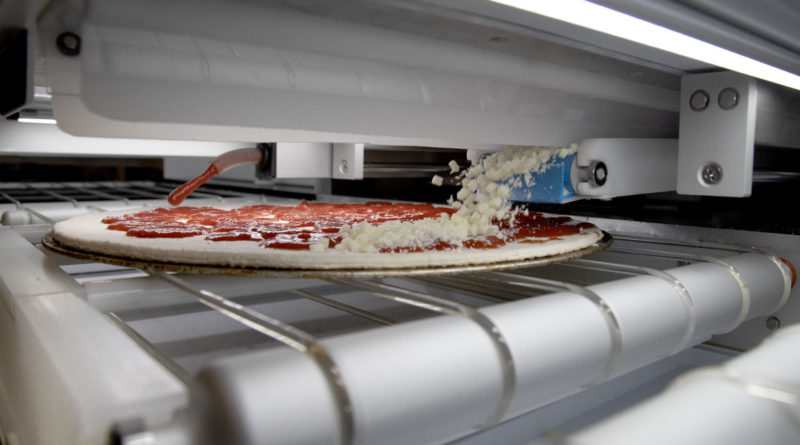Picnic’s Pizza Making Robot Uses Assembly Line System
We’ve seen restaurants experimenting with robots making pizza and also delivering it. Seattle based Picnic (formerly Vivid Robotics) has announced a new pizza-making robot that works a bit differently. Instead of a robot arm doing all the work, an assembly line of customizable food dispensers adds each element to the pie.
When a crust is loaded into the machine, the AI determines it’s size. It then moves into a conveyor where the dispensers add the sauce, cheese, and toppings as it passes underneath. The robots don’t do all the work as once everything is on the pie, a human employee moves it into a pizza oven. Crusts and ingredients can be pre-loaded in anticipation of multiple orders.

Pizza Making Robot Can Prepare 300 Pies in an Hour
The strength of Picnic’s pizza robot is the large volume of pies it can produce. It can prepare about 180 18-inch or 300 12-inch pizzas per hour. Since the robot is modular, the number of ingredients can easily be customized by adding or taking out dispensers in the lineup. Employees can program the robot by simply using an app.
One benefit of a robot like Picnic’s is that by using computer vision and deep learning, each pizza will be made exactly up to standard every time. By using the right amount of ingredients, it will also help cut down on food waste. Picnic’s robot isn’t exclusive to pizza as the company feels it can be tweaked to make a wide variety of foods.
“Our modular system is the first of its kind. It can perform any number of food assembly tasks in any order, completely configurable to any restaurant’s process. Starting with pizza, our system will soon be able to make a wide variety of foods including sandwiches, salads, bowls, and more,” said the company’s website.

Picnic Uses Customizable Subscription Model
Picnic is using a subscription model so there are no upfront costs. Customers also receive cloud analytics, around-the-clock performance monitoring, and continuous free software and hardware upgrades for life. No word on how much a base robot would cost per month but we would imagine it could be beneficial to high volume restaurants.
Check out our articles on Mcdonald’s using voice recognition ordering and a Korean snow removal robot.

